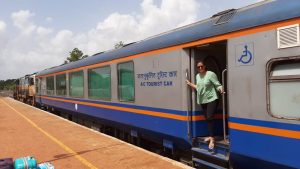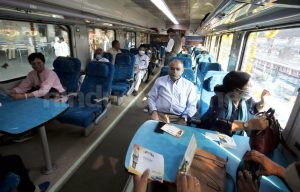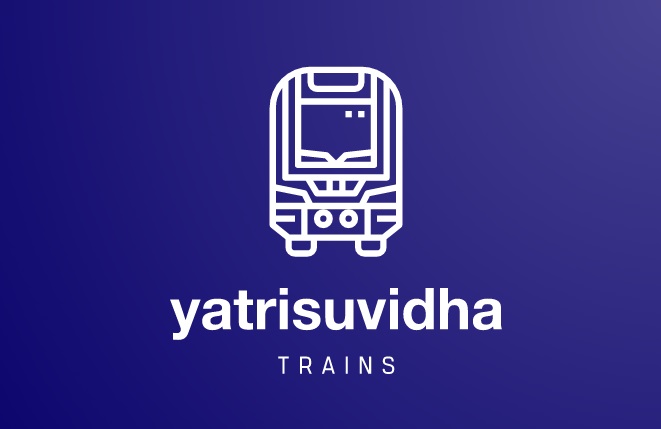
The Jan Shatabdi Express trains in India are an economical and efficient option for passengers traveling medium distances between major cities and towns. Introduced in 2002, these trains are known for their affordability, decent speed, and relatively high comfort, catering to a wide range of passengers. Named to signify the “common man” (“Jan” in Hindi), the Jan Shatabdi Express aims to provide a faster alternative to regular express trains without the luxury of the full Shatabdi Express.
Here’s an in-depth look at everything about the Jan Shatabdi Express, including the ticket prices, routes, schedules, and booking process:
- Background and Purpose of Jan Shatabdi Express
The Jan Shatabdi Express was launched by the Indian Railways to bridge the gap between regular express services and the premium Shatabdi Express trains. While the Shatabdi trains primarily serve major metro cities and offer more luxurious features, the Jan Shatabdi trains target smaller cities and towns, bringing fast, inter-city connectivity to more passengers without the high fare structure.
These trains offer a faster journey compared to regular express trains, with fewer halts and more priority on tracks. Despite being a budget-friendly option, Jan Shatabdi maintains a decent level of comfort and speed, which makes it popular among regular travelers, business commuters, and budget-conscious passengers.
- Routes and Cities Covered by Jan Shatabdi Express
The Jan Shatabdi Express trains operate across several routes connecting important cities across India. Below is a list of popular Jan Shatabdi Express routes:

Mumbai – Ahmedabad Jan Shatabdi Express (Train No. 12009/12010)
Route: Mumbai Central (MMCT) to Ahmedabad Junction (ADI)
Major Stops: Borivali, Vapi, Surat, Vadodara
Distance: Approximately 491 km
Kozhikode – Thiruvananthapuram Jan Shatabdi Express (Train No. 12075/12076)
Route: Kozhikode (CLT) to Thiruvananthapuram Central (TVC)
Major Stops: Kannur, Thrissur, Ernakulam Town, Alappuzha
Distance: Approximately 420 km
Patna – Ranchi Jan Shatabdi Express (Train No. 12365/12366)
Route: Patna Junction (PNBE) to Ranchi Junction (RNC)
Major Stops: Gaya, Koderma, Hazaribagh Town
Distance: Approximately 411 km
Chennai – Coimbatore Jan Shatabdi Express (Train No. 12083/12084)
Route: Chennai Central (MAS) to Coimbatore Junction (CBE)
Major Stops: Arakkonam, Katpadi, Erode
Distance: Approximately 495 km
Bhubaneswar – Howrah Jan Shatabdi Express (Train No. 12073/12074)
Route: Bhubaneswar (BBS) to Howrah Junction (HWH)
Major Stops: Cuttack, Balasore, Kharagpur
Distance: Approximately 440 km
Each route is designed to serve commuters, students, and other regular travelers between these key locations. These trains typically operate on daily or almost daily schedules, ensuring convenient travel options for passengers.
- Ticket Classes and Fares
Jan Shatabdi Express trains are designed to be budget-friendly and accessible. The coaches typically include:
AC Chair Car (CC): Air-conditioned seating with cushioned chairs arranged in a 2×3 configuration.
Second Sitting (2S): Non-AC seating with cushioned benches in a 3×3 arrangement.
The fares for these classes are significantly lower than the regular Shatabdi Express. Here’s a general estimate of the fares on different routes:
AC Chair Car (CC): ₹500 – ₹900, depending on the distance
Second Sitting (2S): ₹150 – ₹400, depending on the distance
These fares are subject to variations based on the route, seasonal demand, and other factors. Discounts are also available for senior citizens, children, and passengers with disabilities.
- Timings and Frequency of Jan Shatabdi Trains
The schedules for Jan Shatabdi trains vary across routes but are typically designed for daytime travel to ensure passenger convenience. Here are sample schedules for some popular Jan Shatabdi routes:
Mumbai – Ahmedabad Jan Shatabdi Express (12009/12010):
Departure from Mumbai Central: 5:40 AM
Arrival at Ahmedabad: 1:30 PM
Frequency: Daily
Kozhikode – Thiruvananthapuram Jan Shatabdi Express (12075/12076):
Departure from Kozhikode: 1:45 PM
Arrival at Thiruvananthapuram: 8:25 PM
Frequency: Daily except Sunday
Chennai – Coimbatore Jan Shatabdi Express (12083/12084):
Departure from Chennai Central: 7:10 AM
Arrival at Coimbatore: 1:50 PM
Frequency: Daily except Tuesday
These timings offer passengers the flexibility of traveling between cities in a single day, reducing the need for overnight journeys and hotel stays.
For real-time updates on schedules and frequency, passengers are advised to check the Indian Railways’ website or the NTES (National Train Enquiry System) app.
- Facilities on Jan Shatabdi Express Trains
Although Jan Shatabdi trains do not match the luxury of Shatabdi Express trains, they offer sufficient amenities for a comfortable journey:
Cushioned Seats in Both AC and Non-AC Coaches: Comfortable seating makes for a relaxed journey, especially for daytime travelers.
Reading Lights and Charging Points: Available in AC coaches for additional convenience.
Onboard Catering (Limited): While full meals are not served, passengers can purchase snacks, beverages, and light meals from onboard vendors.
Clean and Well-Maintained Coaches: Jan Shatabdi Express coaches are typically well-maintained, with regular cleaning schedules.
These trains do not have a pantry car, so passengers are encouraged to carry their own food or purchase items from vendors at major stations en route.
- How to Book Jan Shatabdi Express Tickets
Tickets for Jan Shatabdi Express trains can be booked through multiple channels:
- Online Booking via IRCTC
The Indian Railways Catering and Tourism Corporation (IRCTC) website and mobile app provide the easiest and most convenient way to book tickets. Here’s a step-by-step guide:
Step 1: Visit the IRCTC website or open the IRCTC app.
Step 2: Log in to your account or create a new account if you don’t have one.
Step 3: Enter the origin and destination stations, select the date, and choose “Jan Shatabdi Express” from the list of available trains.
Step 4: Choose the class (AC Chair Car or Second Sitting) and check availability.
Step 5: Complete the payment using a debit card, credit card, or other available payment methods.
Step 6: Once payment is confirmed, download or print the e-ticket.
- Booking at Railway Reservation Counters
For passengers who prefer booking in person, railway reservation counters at stations also offer ticket booking facilities for Jan Shatabdi Express.
- Booking via Authorized Agents
Several authorized travel agents and IRCTC-approved agencies offer ticket booking services for those who cannot access the IRCTC portal.
- Tatkal Quota
The Jan Shatabdi Express has a limited Tatkal quota for last-minute bookings. Tatkal bookings open one day prior to the train’s departure. However, these tickets are in high demand, so early booking is recommended.
- Refund and Cancellation Policy
Indian Railways offers a cancellation and refund policy for Jan Shatabdi Express tickets, subject to certain rules:
Cancellation Charges: A nominal fee is charged for cancellations, depending on the time remaining before departure.
Tatkal Tickets: Refunds for Tatkal tickets are generally not available, except under specific circumstances like train cancellations.
E-Tickets: For tickets booked through IRCTC, passengers can initiate the cancellation and refund process online.
The exact cancellation charges and refund policies vary, so passengers are advised to check the latest details on the IRCTC portal.
- Travel Tips and Recommendations
Book in Advance: Jan Shatabdi tickets are in high demand, especially during peak seasons and holidays. Booking early ensures seat availability.
Pack Food and Water: While snacks are available onboard, it’s advisable to carry your own food and water, especially for longer routes.
Check Real-Time Status: Use the NTES app or IRCTC portal to check train running status, as delays can occur due to track congestion.
Arrive Early: Arriving at the station early helps you avoid last-minute rush and secure your seat.

Leave a Reply